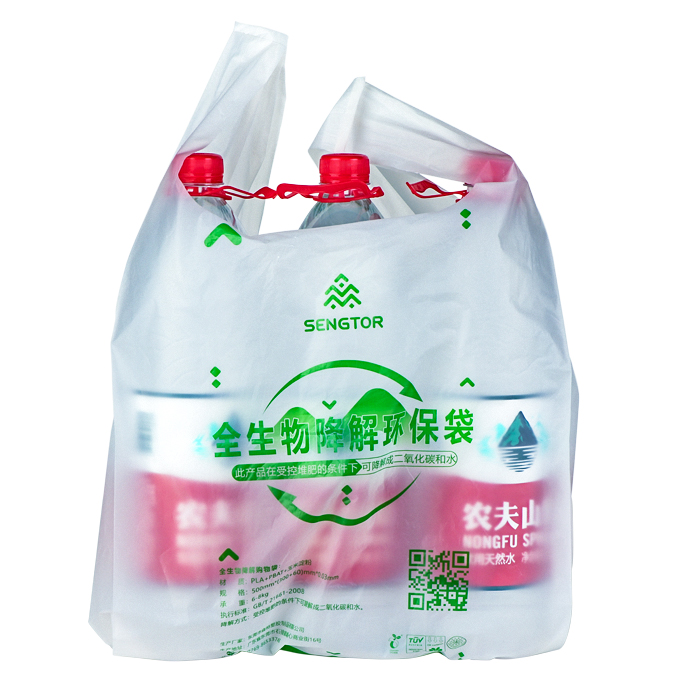Company News
The main raw material of degradable garbage bags is degradable plastic. This is a special high molecular polymer, and its characteristic is that with the end of the product life cycle, the molecular weight will automatically decrease, and the plastic will become brittle, soft, easy to break and lose its mechanical strength. Degradable garbage bags are different from ordinary plastic bags. It takes hundreds of years for ordinary plastic bags to degrade naturally after being buried in the ground after use. Landfill or incineration will also cause environmental pollution. The emergence of degradable garbage bags has made an important contribution to reducing white pollution and protecting the environment.
Degradable garbage bags refer to adding a certain amount of starch, modified starch, cellulose, biodegradants and other additives to plastic raw materials during the production process of plastic bags, thereby reducing the plastic stability of degradable garbage bags and making them easier to use. Degrades in natural environment.

There are two main types of degradable garbage bags commonly used in the market. One is a degradable material made of PBAT and PLA with added starch. The garbage bags produced from this material can be completely converted into water after decomposition. In addition to being used to produce degradable garbage bags, it can also be used to produce various shopping bags and disposable plastic films. The disadvantages of this kind of degradable plastic material are low strength and high price, and a large amount of leftover materials will be produced in the production, but these leftover materials are difficult to recycle and reuse. Therefore, the cost of degradable garbage bags produced by PBAT and PLA materials is very high, which is common 3-5 times of garbage bags.
Another kind of degradable garbage bag is produced from bio-based plastics. In addition to ordinary HDPE, LDPE and other materials and starch, its raw materials also have many kinds of additives, and the starch content is very high, which can be as high as 15%. The biodegradable garbage bags produced by using bio-based plastics can be observed under a microscope, and its internal structure can be seen to be composed of many honeycomb holes. The oxidation speed during the decomposition process, coupled with the fact that there are many additives in the raw materials of bio-based plastics, these additives can effectively promote the decomposition speed of degradable garbage bags, making the garbage bags embrittled in a short time and decomposing into countless damages to the environment. Harmless tiny particles.





